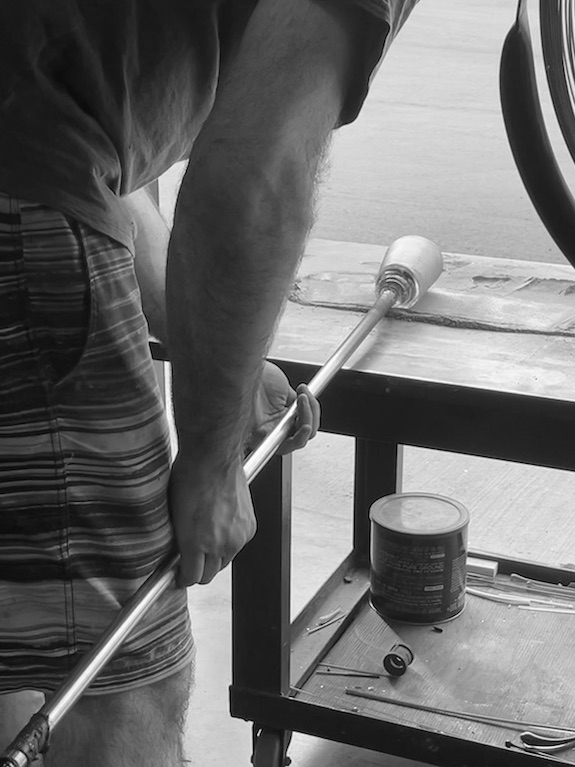
Experience the gathering
“I had no idea glassblowing involved so much movement, so much multitasking and could be so much fun.”
We regularly hear such comments from our glassblowing workshop participants. Regardless of age, artistic, or athletic abilities, learning to blow glass is akin to patting your head and rubbing your stomach at the same time. With glassblowing, you’re asking your brain to manage doing multiple things at once. It takes coordination, a sense of humour and a willingness to try. The challenge is even more surprising when you’ve watched an accomplished artist make it look so easy.
Walking into fascapple glass, people marvel at the beautiful work in our gallery, don their safety glasses and with bottles of water in tow, head back to the hot shop where the magic happens. It’s a whole new world of colour and creating and a whole new language to learn. Here are a few terms and tools we use:
Gather: The amount of glass the artist takes from the furnace on either the blowpipe to begin or further develop a piece, or on the punty at another stage of the process. An experienced artist will have an accurate sense of the gather they need for a particular piece. They begin by opening the furnace door just enough to reveal the orangey hue of the molten glass and gather just enough to get started.
Marver: At fascapple glass, the marver looks like a table with a smooth, thick stainless-steel top. The term marver originates from the French word, mabre and it’s a tool used when an artist wants to shape or add wee bits of colour (aka frit) to hot softened glass sitting on the end of a blowpipe or punty.
Blowpipe: Imagine a steel tube about four to five feet long. On one end a blob (gather) of molten glass taken from the furnace. On the other, a somewhat-tapered end into which an artist blows air to inflate the glass bubble. For a variety of reasons, at fascapple glass, you’ll blow into a light long rubber hose, called a noodle, which is attached to the blowpipe.
Punty: Once the bottom of a piece has been created, it’s time to focus on the top. That’s where a long solid metal rod called the punty (pontil) typically comes into play. The punty is dipped in the molten glass. The blob of hot glass sitting on the end of the punty is then affixed to the bottom of the piece, allowing the artist to control it from the bottom and focus on creating the object’s top.
That’s just a glimpse inside our world. Whether you visit for half an hour or half a day, you’ll hear and work with tools and terms like these. Whether you make a cup, a paper weight, a small bowl, it all starts with a sense of adventure and a gather of glass. After that: It’s your turn to wonder at the treasures you’ve created for years to come.
